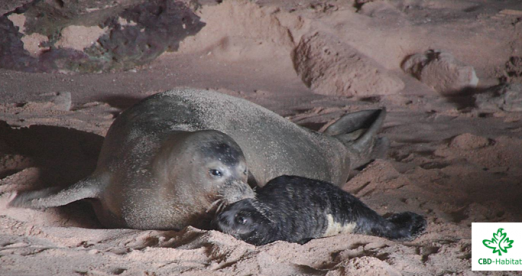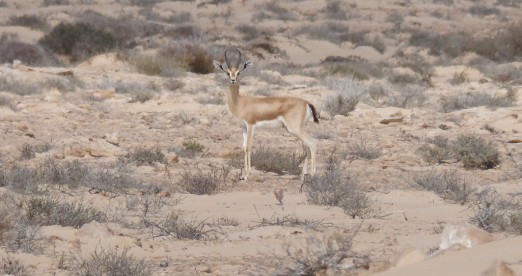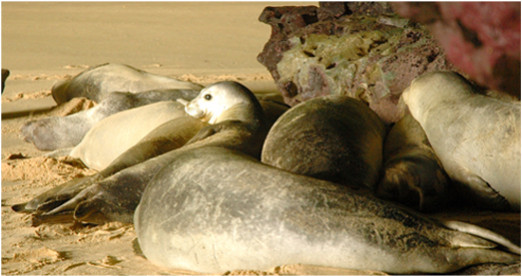The return of the Gazelles
Publicado por Fundación CBD-Habitat
We talked before on this same blog about the Dorcas gazelle and how it shared the habitat with the monk seal. We never get tired on insisting about the vulnerable situation in which this species is. Even more if we think about the luck that had other members of the great Saharan fauna, extinct in the wild between the 50s and 60s. We are referring to the mohor antelope (Nanger dama mhorr), addax antelope (Addax nasomaculatus) scimitar-horned oryx (Oryx dammah) and the red neck ostrich (Struthio camelus camelus).
But there is always hope. Even thought it was man’s hand the one that drove these species to extinction due to excessive hunting pressure, in this case it is as well the hands of men the ones that started the protection measures for its recovery.
By initiative of the association Nature Initiative, an NGO of the city of Dakhla (former city of Villa Cisneros), on 2005, the High Commissariat of Water and Forest and of the Agency against Morocco Desertification (HCEFLD in French), CBD-Habitat foundation and the association Nature Initiative, started a reintroduction project with the final goal of recovering viable wild populations of extinguished species: Mohor antelope, addax antelope and the red neck ostrich. Advised by scientists of the Experimental Station of Arid Areas (EEZA-CSIC in Spanish) at Almeria.
With captivity breeding programs, extinguished wild populations can be recovered thanks to projects of reintroduction on its natural habitat. In the case of the Mohor Antelope, the captivity breeding program for this species worldwide is leaded by the Rescue Park of Sahara Fauna of Almeria (EEZA-CSIC), where it exists as well other captivity breeding programs of other Saharan ungulates like the ones for Dorcas Gazelle (Gazella dorcas neglecta), Cuvier Gazelle (Gazella cuvieri) and the Arrui (Ammotragus lervia sahariensis).
This reintroduction project’s first step was the construction of an acclimation enclosure of 600ha at the Safia-Agmammine region, on the Aousserd province, not far away from the frontier with Mauritania. What differs this enclosure of other reserves, is that this one is located at these species natural habitat.
On 2008, 16 antelopes mohor were sent to Safia’s enclosure as well as 10 addax, coming from the Real de R’Mila reserve (Marrakech) and of the National Park of Souss-Massa (Agadir). On 2010, the addax population was reinforced with 10 more individuals and 9 red neck ostriches brought from Souss-Massa. From the beginning, a monitor surveillance system was started on the area, with the aim of protecting the semi-captivity population and to start the security basis on the area, always thinking on a future liberation.
10 years later, we have the opportunity of giving a giant step, with the first experimental release of a group of “mohor” tagged with satellite GPS collars.
Before facing this liberation phase, we still have many things to do, on the next few weeks we will start with the first step; the construction of an installation that will allow us- inside the enclosure- to select the individuals that will be released and isolate them from the rest of the animals. Next steps would be the capture, tagging, release and monitoring. Keep post for updates!
Before finishing, we would like to give recognition to a person without whom we wouldn’t had been able to get to where we are, Abdellahi El Mokhtar, the former president on the first years of the Association Nature Initiative who died on a car accident while going to Safia’s enclosure to place informative panels about the prohibition of hunting at the region and about the protected dorcas gazelle.

This is for him and for all who believed from the beginning that it would come the day in which we would be delighted contemplating a group of “mohor” between the acacias and dunes of the Oued Eddahab Lagouera region.
But there is always hope. Even thought it was man’s hand the one that drove these species to extinction due to excessive hunting pressure, in this case it is as well the hands of men the ones that started the protection measures for its recovery.
By initiative of the association Nature Initiative, an NGO of the city of Dakhla (former city of Villa Cisneros), on 2005, the High Commissariat of Water and Forest and of the Agency against Morocco Desertification (HCEFLD in French), CBD-Habitat foundation and the association Nature Initiative, started a reintroduction project with the final goal of recovering viable wild populations of extinguished species: Mohor antelope, addax antelope and the red neck ostrich. Advised by scientists of the Experimental Station of Arid Areas (EEZA-CSIC in Spanish) at Almeria.
With captivity breeding programs, extinguished wild populations can be recovered thanks to projects of reintroduction on its natural habitat. In the case of the Mohor Antelope, the captivity breeding program for this species worldwide is leaded by the Rescue Park of Sahara Fauna of Almeria (EEZA-CSIC), where it exists as well other captivity breeding programs of other Saharan ungulates like the ones for Dorcas Gazelle (Gazella dorcas neglecta), Cuvier Gazelle (Gazella cuvieri) and the Arrui (Ammotragus lervia sahariensis).
This reintroduction project’s first step was the construction of an acclimation enclosure of 600ha at the Safia-Agmammine region, on the Aousserd province, not far away from the frontier with Mauritania. What differs this enclosure of other reserves, is that this one is located at these species natural habitat.
On 2008, 16 antelopes mohor were sent to Safia’s enclosure as well as 10 addax, coming from the Real de R’Mila reserve (Marrakech) and of the National Park of Souss-Massa (Agadir). On 2010, the addax population was reinforced with 10 more individuals and 9 red neck ostriches brought from Souss-Massa. From the beginning, a monitor surveillance system was started on the area, with the aim of protecting the semi-captivity population and to start the security basis on the area, always thinking on a future liberation.
10 years later, we have the opportunity of giving a giant step, with the first experimental release of a group of “mohor” tagged with satellite GPS collars.
Before facing this liberation phase, we still have many things to do, on the next few weeks we will start with the first step; the construction of an installation that will allow us- inside the enclosure- to select the individuals that will be released and isolate them from the rest of the animals. Next steps would be the capture, tagging, release and monitoring. Keep post for updates!
Before finishing, we would like to give recognition to a person without whom we wouldn’t had been able to get to where we are, Abdellahi El Mokhtar, the former president on the first years of the Association Nature Initiative who died on a car accident while going to Safia’s enclosure to place informative panels about the prohibition of hunting at the region and about the protected dorcas gazelle.

This is for him and for all who believed from the beginning that it would come the day in which we would be delighted contemplating a group of “mohor” between the acacias and dunes of the Oued Eddahab Lagouera region.








